Needless to say, having a personal vehicle is way better than having to commute every time you need to go somewhere.
But what if you suddenly need it in an emergency and find that the battery is completely discharged? That would be a terrible experience that should simply never happen again.

What if you suddenly need it in an emergency and find that the battery is completely discharged
What exactly could be causing it to discharge even if parked or left overnight?
Philkotse.com prepared some of the common reasons why your battery doesn’t charge. We’ll also give you some helpful tips on how to find out the real problem with your car battery.
Why can’t my battery hold its charge?
Before we head on to the tips, suggestions, and what-not’s, here are the main reasons for car batteries not holding charge. If your battery discharges shortly after the engine dies down, it’s usually one of the following listed causes.
- There may be a parasitic drain that causes the power to leak out.
- There may be a problem in the electrical system that’s negatively affecting the battery power.
- The car battery may already be older than its service life. (This is usually after 4 to 5 years of usage).

The car battery may already be older than its service life
>>> Read more:
- How Long Do Car Batteries Last: The Numbers and The Factors
- 7 factors that affect your car's battery life expectancy
Contrary to what most people assume, a lot of the battery-related problems can actually be detected without the presence of an expert. All you need to have is a bit of common sense, along with some tools.
Today, we’ll teach you how to find what’s causing the battery-related problems with a few tests. If you think you belong to the group of average vehicle owners.
Don’t worry because these tests are super simple! Just follow the instructions we laid out for you. But you need to be reminded that if you think the time is nigh to take your battery to the shop, do so.
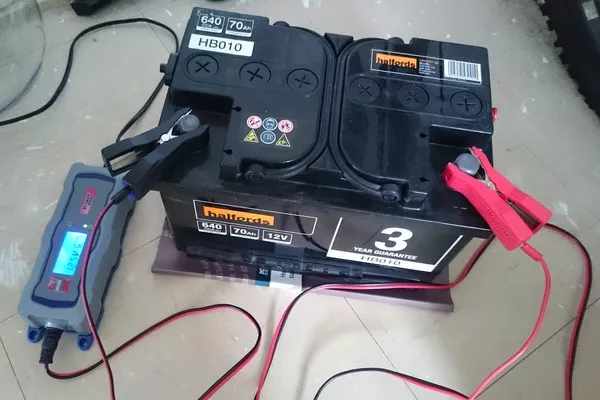
A lot of the battery-related problems can actually be detected without the presence of an expert
1. Inspect the car battery
Problems in relation to poor battery performance are usually traced back to poor maintenance habits, one of the most popular reasons for failing battery. For example, you may forget that the battery electrolyte level is lower than it should be.
You may also accidentally neglect that the terminals have developed corrosion or have become loose. Start your diagnostics with a thorough visual inspection.
To better inspect the battery, disconnect it, and put it on a bench or desk under good lighting. Once you find a good spot to inspect it, check the battery posts and case for damages and check the electrolyte level. Also, inspect the case for signs of bulging.
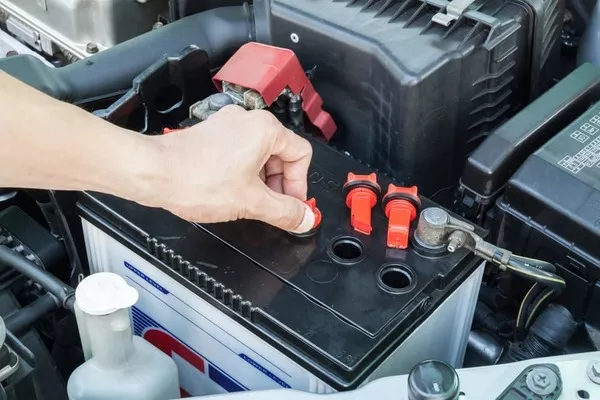
Problems in relation to poor battery performance are usually traced back to poor maintenance habits
2. Perform battery terminal test
This test can help you determine whether the battery terminals are still making substantial contact with your battery posts. The battery terminal test basically measures the voltage drop between your battery posts and the terminal.
A high voltage drop signals that your charging system is having difficulty when it comes to supplying enough charging voltage to your battery.
This means that the battery is having trouble delivering power to your vehicle’s fuel injection systems and other circuits. To do this test, see the instructions below:

The battery terminal test basically measures the voltage drop between your battery posts and the terminal
- Disable your car’s fuel system. This can be done by removing the vehicle’s fuel pump fuse. To find this, locate the fuse box or the power box. This will prevent the car from starting its engine while we do the test. Then, set the digital voltmeter to a low setting on the direct current (DC) volts scale.
- Now, take your negative voltmeter lead and connect it to the positive battery post’s cable terminal.
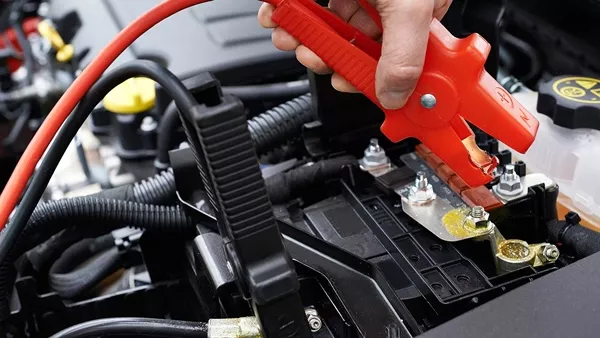
Perform battery terminal test is very important no matter what
>>> Just in case you're searching for: The Best Method on How to Clean Car Battery Terminals
- Take your positive voltmeter lead and connect it to your positive battery post.
- Have your assistant set the vehicle on the parking brake, then have him swing the transmission to Neutral. Run the engine for just enough time to get a good voltage reading. But take note, it should not run for more than 30 seconds.
- If the voltmeter reads above 0.1 of the voltage drop, your battery’s connections may be dirty or loose. Inspect these connections for damage, corrosion, or looseness.
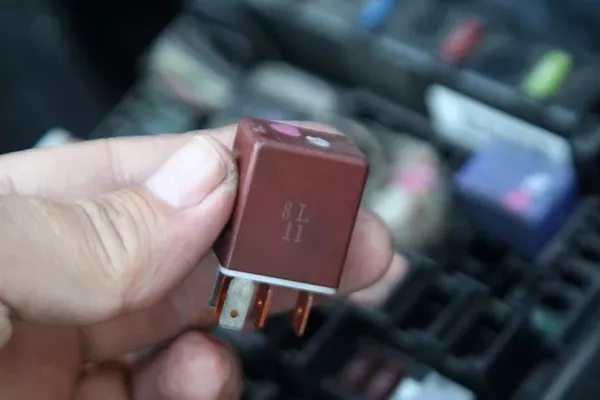
Disable your car’s fuel system
>>> Related: Car battery drain overnight: 5 Possible causes and How to fix it
3. Perform battery voltage test
If your car is equipped with free maintenance, batteries are equipped with a charge indicator. This will tell you if it needs to be recharged or is still full.
There are also batteries that are completely replaceable. Free maintenance batteries are those that don’t come with removable caps.
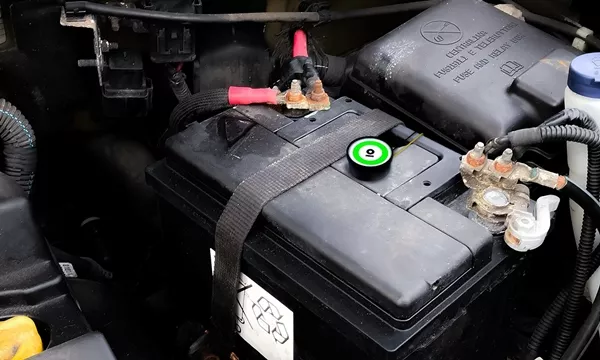
If your car is equipped with free maintenance, batteries are equipped with a charge indicator
>>> For your information:
- This is how you can diagnose your car's dead car battery
- What you need to know about a dying car battery
Performing a battery voltage test is highly useful, especially for maintenance-free batteries. Now, why is that? Because by doing so, you will immediately be informed of the current state and condition of the battery.
For regular batteries with removable caps, a hydrometer is suggested. This can also give you helpful info as to why your battery isn’t working properly.
Here’s how you can use your digital multimeter in testing your battery:
- Start by turning your high beam on for about ten seconds. Turn them off. Sit back for two minutes.
- Disconnect your negative cable (the black one) from the battery.
- Make sure the digital multimeter is at 20V on DCV (direct current scale).
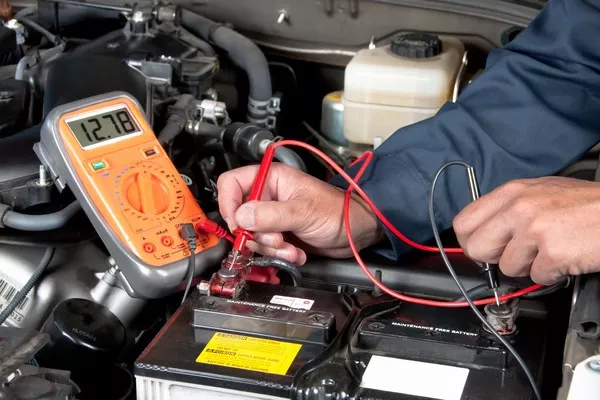
Performing a battery voltage test is highly useful, especially for maintenance-free batteries
>>> Worth reading: Handy tips on how to charge and maintain car battery properly
4. Then, connect the meter to the battery posts
If the reading is somewhere from 12.4 to 12.6, the battery is charged fine. If you suspect a battery problem due to problems with:
- Starting the engine
- Electrical circuit
- Alternator warning light
The problem is not with the car battery. But if the reading gives you a result lower than 12.4, that means your car battery is undercharged.
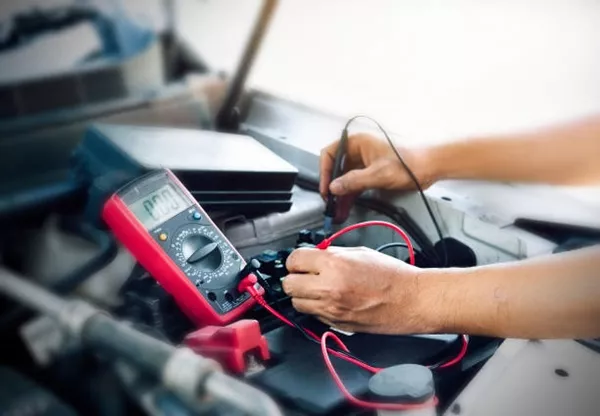
If the reading is somewhere from 12.4 to 12.6, the battery is charged fine
This means the battery is the problem. If you’re in doubt, you can redo the test to make sure. If the same results show up, you may need to take it to the hands of an expert.
Recent posts
- How you deal with the yellowish-white powder on your car battery Mar 12, 2021
- Do you think you know all different types of car battery? Jan 05, 2021
- Everything you need to know about battery electrolytes Dec 31, 2019
- How to keep car battery from dying and everything you need to know Mar 12, 2021
- A driver's guide in choosing the right battery brand in the Philippines Mar 10, 2022












